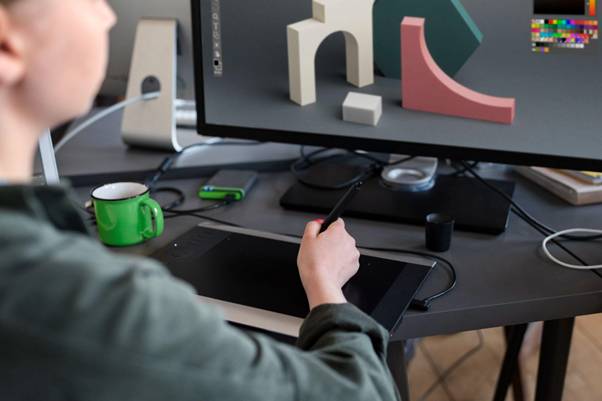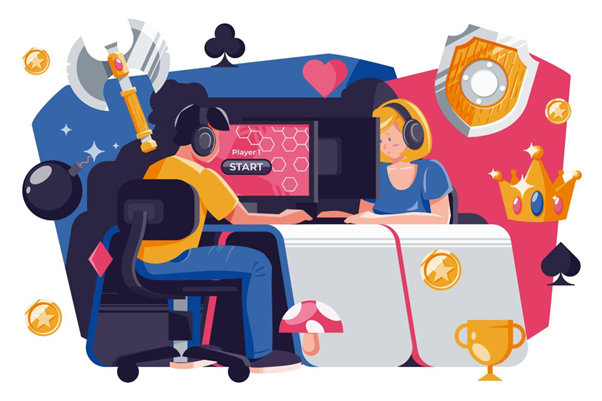Crafting 3D Characters for Games: A Comprehensive Guide

Exploring the Booming Game Development Scene in Australia
Australia's game development sector is on a meteoric rise, boasting a surge in popularity and market reach. Fueled by a blend of talent, innovation, and a dynamic gaming community, Australia has firmly established itself as a hotspot for pushing the boundaries of gaming creativity.
This article aims to demystify the process of creating 3D characters for games, tailored specifically to the Australian gaming landscape. Whether you're a seasoned developer or an avid gamer, join us as we unveil the secrets behind crafting characters that resonate across diverse game genres. As a game development company in Australia, understanding the nuances of character design in the local market can significantly enhance the quality and appeal of your gaming products.
The Evolution of 3D Game Character Design
Conceptualization and Design
The journey of creating a 3D game character begins with conceptualization and design. This phase involves brainstorming concepts, sketching initial ideas, and refining them until a coherent vision takes shape. Through sketches and concept art, different design possibilities are explored and iterated upon to breathe life into the character.
Remember, the aim is not just to craft a character but to weave a narrative through their design. So, let your imagination run wild and witness as your character springs to life from the depths of your creativity!
Modeling and Sculpting
Once the character concept is solidified, the next step is 3D modeling. This entails creating a three-dimensional representation of the character using specialized software like Blender, Maya, or ZBrush. Modelers employ a mix of polygonal modeling, sculpting, and other techniques to give the character form and substance in the digital realm.
This phase is pivotal as it lays the foundation for the character's physical appearance, setting the stage for subsequent stages of the design process.
Texturing
With the 3D model in place, the focus shifts to texturing. Texturing involves adding surface details such as skin texture, clothing, and props to enhance visual appeal and realism. Texture artists leverage software like Substance Painter or Photoshop to create intricate textures that breathe life into the character, conveying essential details about their identity and personality.
Rigging
Once textured, the character undergoes rigging for animation. Rigging involves creating a digital skeleton comprising bones and joints, which are then linked to the character's mesh. This enables animators to manipulate the character's movements seamlessly. Rigging artists utilize specialized software to define how each bone influences the character's motion, facilitating lifelike animations and expressions.
Animation
With the character rigged, it's time to infuse it with movement through animation. Animators craft movement sequences such as walking, running, and interacting with the game environment. Keyframes are used to define the character's poses and actions, injecting vitality into the digital creation. This process demands precise manipulation of keyframes to delineate the character's movements accurately.
Lighting and Rendering
Once the character is fully animated, attention turns to lighting and rendering the scene to bring the game environment to life. Lighting plays a pivotal role in setting the mood and ambiance of the game world. Lighting artists employ techniques such as global illumination, shadow mapping, and HDR rendering to achieve desired visual effects. Rendering involves generating final images or frames of the animated character within the game environment, optimizing settings for top-notch visual quality.
Tools and Software for 3D Character Design
● Blender: A versatile open-source 3D creation suite offering comprehensive features for modeling, sculpting, animation, and rendering.
● Autodesk Maya: A powerful software for 3D animation, modeling, and rendering, equipped with industry-standard tools and workflows.
● ZBrush: A digital sculpting tool favored by character artists for creating intricate 3D models with high-resolution details.
● Substance Painter: Ideal for texture painting, offering a user-friendly interface and advanced features for realistic texture creation.
● Adobe Photoshop: Used for image editing and texture refinement, enabling artists to add final touches to character designs.
● Autodesk 3ds Max: Popular software for 3D modeling and animation, known for its extensive toolset and compatibility.
● Unity: A versatile game engine renowned for its ease of use and vast asset store, making it a top choice for Australian developers.
● Unreal Engine: Offering advanced features for character animation, rendering, and simulation, it's favored for large-scale game projects.
Conclusion
We've clarified the process "how to create 3d characters", uncovering the stages, techniques, and tools essential for crafting captivating characters in the Australian gaming sphere. From inception to fruition, each step is infused with the art of storytelling, inviting developers and enthusiasts alike to unleash their creativity and give life to their digital creations.

MORE



